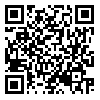Volume 2, Issue 3 (2013)
JCP 2013, 2(3): 375-385 |
Back to browse issues page
Download citation:
BibTeX | RIS | EndNote | Medlars | ProCite | Reference Manager | RefWorks
Send citation to:



BibTeX | RIS | EndNote | Medlars | ProCite | Reference Manager | RefWorks
Send citation to:
Sobhani M, Madadi H, Gharali B. Host plant effect on functional response and consumption rate of Episyrphus balteatus (Diptera: Syrphidae) feeding on different densities of Aphis gossypii (Hemiptera: Aphididae)of Aphis gossypii (Hemiptera: Aphididae). JCP 2013; 2 (3) :375-385
URL: http://jcp.modares.ac.ir/article-3-3565-en.html
URL: http://jcp.modares.ac.ir/article-3-3565-en.html
1- Department of Plant Protection, Faculty of Agriculture, Bu-Ali Sina University, Hamedan, Iran.
2- Department of Entomology, Research Center for Agriculture and Natural Resources, No. 118, Ghazvin, Iran.
2- Department of Entomology, Research Center for Agriculture and Natural Resources, No. 118, Ghazvin, Iran.
Abstract: (4297 Views)
One of the most important predator-prey interactions is functional response which its type and parameters are affected by different factors including host plant characteristics. In this research, the influence of leaf surface on functional response and prey consumption rate of third instar larvae of the Episyrphus balteatus (De Geer, 1776) (Diptera: Syrphidae) to third instar nymphs of Aphis gossypii Glover (Hemiptera: Aphididae) were studied on sweet pepper and cucumber leaves. The results demonstrated that leaf surface of host plants; different prey densities and their interaction had significant effects on the numbers of prey killed by a predator. Logistic regression indicated type Ш functional response on both host plant leaves. The values of b constant were 0.00231 and 0.00351h-1 while handling time (Th) estimates were 0.14 h and 0.095 h on cucumber and sweet pepper leaves respectively. Moreover, plant leaves and different prey densities had significant effect on the prey consumption rate and voracity of predator. The maximum voracity values reached were 180.73 ± 7.71 and 282.25 ± 11.71 nymphs on cucumber and sweet pepper leaves respectively. These results emphasize on the importance of physical traits of host plant surface on the performance and searching efficiency of natural enemies that should be considered for optimizing their application in aphid biological control.
Received: 2013/06/9 | Accepted: 2013/07/1 | Published: 2013/07/14
| Rights and permissions | |
 |
This work is licensed under a Creative Commons Attribution-NonCommercial 4.0 International License. |








